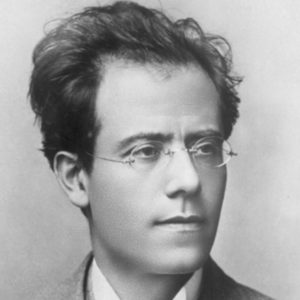GRAMOPHONE: From Where I Sit – February 2018
 Last month’s focus on the Jarvi conducting dynasty has prompted me to reflect on the number of times Jarvi senior (father Neeme) has come out on top in my own comparative reviewing – not least on BBC Radio 3’s Record Review where he has scooped at least as many Building a Library choices as the best of his peers. Off the top of my head his recordings of Shostakovich’s Tenth Symphony (still an absolute scorcher) and Prokofiev’s Alexander Nevsky were my top choices at the time I surveyed all the available recordings of those works. There were others.
Last month’s focus on the Jarvi conducting dynasty has prompted me to reflect on the number of times Jarvi senior (father Neeme) has come out on top in my own comparative reviewing – not least on BBC Radio 3’s Record Review where he has scooped at least as many Building a Library choices as the best of his peers. Off the top of my head his recordings of Shostakovich’s Tenth Symphony (still an absolute scorcher) and Prokofiev’s Alexander Nevsky were my top choices at the time I surveyed all the available recordings of those works. There were others.
Comparative reviewing is, of course, at the very heart of what a classical music journalist does, and as the wider catalogue of recordings and their easy accessibility has grown exponentially so too has the value of detailed and well-reasoned advice such as one finds in the pages of this magazine. It’s all so subjective, of course, but as readers and listeners alike get to know the personal tastes (and foibles) of their favourite critics they are able to process their opinions and, if you like, “hear” those recordings before doing so through the descriptive elements of the review alone.
Long before I started writing for GRAMOPHONE I would weigh up the words of my favourite critics, in some cases read between them, and often plump not for the “best all round” recommendation of a particular work but the one I felt would excite and engage me the most. To this day I can remember thinking that I might actually get more from the Charles Munch/Boston Dvorak Eighth than the spanking new Kertesz/LSO. Initially I was swayed to the latter; eventually I would have both. Then again, how I agonised over my first Aida – knowing that the Gold Standard was Karajan/Decca with Tebaldi and Del Monaco but sensing that the new Solti/RCA with Leontyne Price, Vickers, and Gorr would blow my socks off. It still does.
When I could afford to add multiple versions of a piece into my vinyl collection (often through second-hand sources) there was no stopping me. Which may account for the fact that long before I started writing about music I probably had in excess of 25 versions of The Rite of Spring on my shelves and heaven knows how many Mahler symphonies. The point being, I suppose, that even a well annotated musical text is open to many different interpretations wherein the subtlest shifts in emphasis, balance, colour, and atmosphere can utterly transform the outcome. That’s the fun and fascination of being both music lover and collector.
Coming back to Neeme Jarvi, we are not talking here of an assertively “interventionist” conductor but rather a sage musical commentator with an innate sense of “how the music should go’. I can only remember one glaring instance in the opening movement of Shostakovich’s Leningrad Symphony where he wilfully ignored the composer’s directive NOT to increase the tempo as the Bolero-like climax intensified. Composer 1: Jarvi 0.
Who knows how and why the magic descends on some occasions and not on others – especially in the recording studio where the frisson of a live performance isn’t an added factor. The score often won’t tell you why – but you’ll know it when you hear it.
You May Also Like

A Conversation With VASILY PETRENKO: His Shostakovich symphony cycle
01/10/2013
A Conversation With JAMIE BERNSTEIN
02/09/2010
